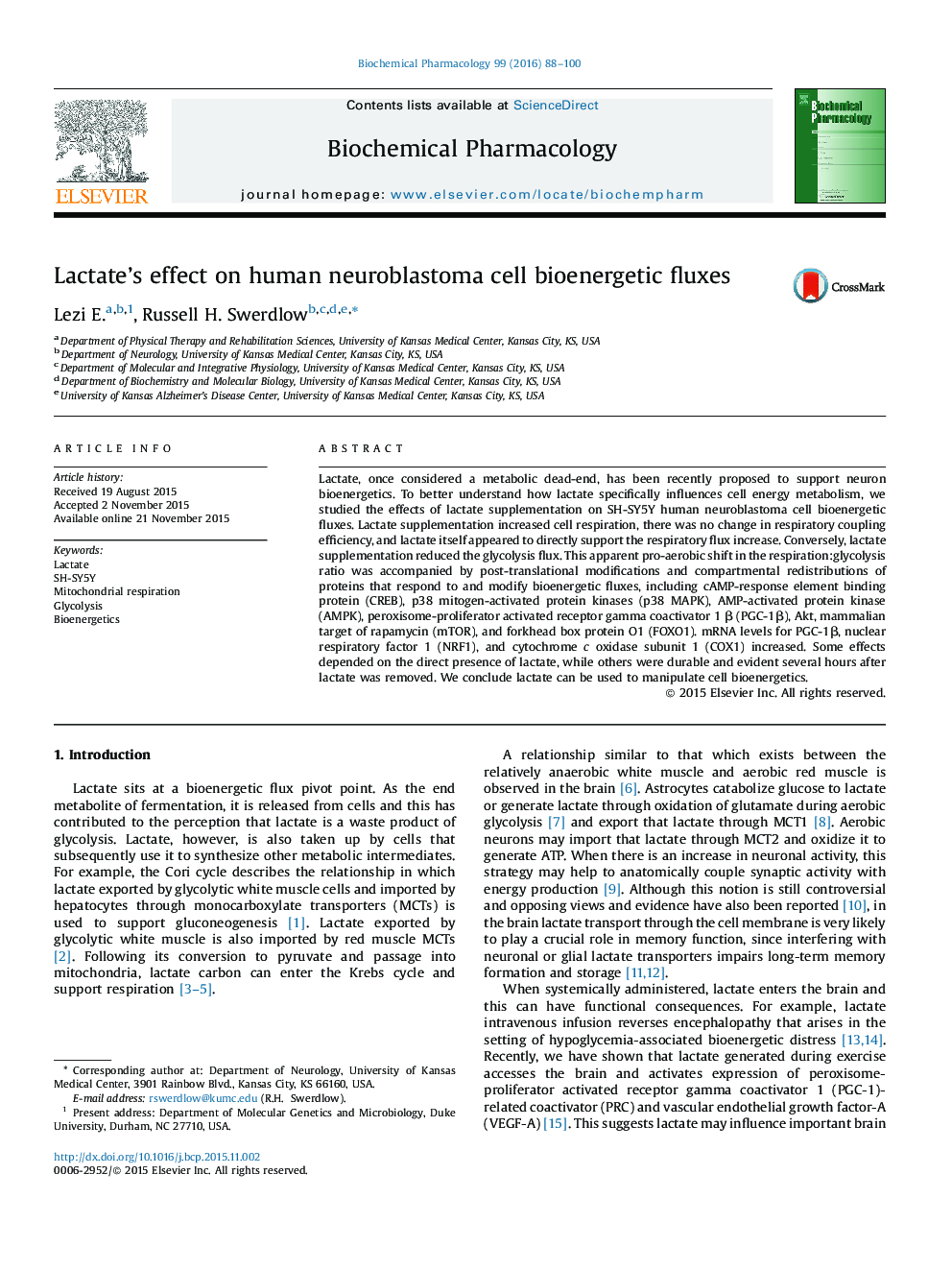| Article ID | Journal | Published Year | Pages | File Type |
|---|---|---|---|---|
| 2511888 | Biochemical Pharmacology | 2016 | 13 Pages |
Lactate, once considered a metabolic dead-end, has been recently proposed to support neuron bioenergetics. To better understand how lactate specifically influences cell energy metabolism, we studied the effects of lactate supplementation on SH-SY5Y human neuroblastoma cell bioenergetic fluxes. Lactate supplementation increased cell respiration, there was no change in respiratory coupling efficiency, and lactate itself appeared to directly support the respiratory flux increase. Conversely, lactate supplementation reduced the glycolysis flux. This apparent pro-aerobic shift in the respiration:glycolysis ratio was accompanied by post-translational modifications and compartmental redistributions of proteins that respond to and modify bioenergetic fluxes, including cAMP-response element binding protein (CREB), p38 mitogen-activated protein kinases (p38 MAPK), AMP-activated protein kinase (AMPK), peroxisome-proliferator activated receptor gamma coactivator 1 β (PGC-1β), Akt, mammalian target of rapamycin (mTOR), and forkhead box protein O1 (FOXO1). mRNA levels for PGC-1β, nuclear respiratory factor 1 (NRF1), and cytochrome c oxidase subunit 1 (COX1) increased. Some effects depended on the direct presence of lactate, while others were durable and evident several hours after lactate was removed. We conclude lactate can be used to manipulate cell bioenergetics.
Graphical abstractFigure optionsDownload full-size imageDownload as PowerPoint slide
